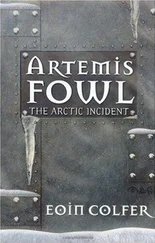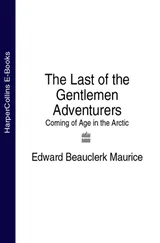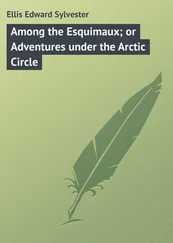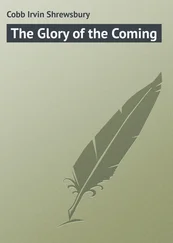“How do I get into the aft compartment, then?”
“There is an access door in the tail just forward of the horizontal stabilizer on the starboard side. You’ll have to work your way forward through the pressurized crew spaces from there.”
“Right.” Smith stood awkwardly and waddled toward the murky outline of the downed bomber.
The port-side wing of the TU-4 had been torn loose in the crash and folded back almost flush against the fuselage, but the starboard approaches to the bomber were clear. As he circled around the great aluminum slab of the horizontal stabilizers Smith found himself marveling a little. Even in an age of giant military transports and jumbo jet airliners, this thing was huge. And they were actually flying these monsters during the Second World War.
Smith approached the great cylindrical body and ran a hand over the ice-glazed metal.
“Okay, I’m here and I’ve found the entry door. There’s a flush-mounted handle, but it looks like it’s been popped out.”
“The emergency release will have been pulled from the inside,” Valentina replied. “It should open, but you might have to pry it a bit.”
“Right.” Smith had a small tool kit slung at his belt, and he drew a heavy long-hafted screwdriver from it. Fitting the tip of the blade into the frost-clogged slit around the door, he slammed the heel of his hand against the butt of the tool. After a couple of blows there was a sharp crack as the ice seal broke. A few more moments of levering, and the door swung outward, the wind catching at it, leaving a rectangular shadowed gap in the fuselage.
“You were right, Val. It’s open. Going inside now.”
Bending low, he ducked through the small door.
It was dark inside the fuselage, with only the trace of dull exterior light at his back. Smith removed a flashlight from his tool kit and snapped it on.
“Damn,” he murmured. “I never expected this.”
“What are you seeing, Jon?” Valentina demanded.
Smith panned the flashlight beam around the fuselage interior. No appreciable amount of snow had leaked inside, but ice crystals glittered everywhere, thinly encrusting the battleship gray frames and cable and duct clusters. “It’s incredible. There’s no sign of corrosion or degradation anywhere. This thing might have rolled out of the factory yesterday.”
“Natural cold storage!” the historian exclaimed over the radio. “This is fabulous. Keep going!”
“Okay, there’s a catwalk leading aft past a couple of large flat rectangular boxes to a circular dished hatch right in the tail of the airplane. The hatch is closed, and there is a round window set in its center. A couple of what look like ammunition feed tracks are set on either side of it. I guess that must be the tail gunner’s station.”
“Correct. Is there anything else noteworthy back there?”
“There’s some kind of a mount or pedestal with a couple of unbolted cables hanging from it. It looks like some piece of equipment has been dismantled.”
“That would be the generator set of the auxiliary power unit,” the historian mused. “That’s rather interesting. Now, just to your right there should be a bulkhead with another pressure hatch centered in it, leading forward.”
“There is. It’s closed.”
“The B-29/TU-4 family was one of the first military aircraft designed specifically for high-altitude flight. A number of its compartments were pressurized to allow its crew to survive without the need for oxygen masks. You’re going to have to work forward through a series of these pressure hatches.”
“Got it.” Smith shuffled over to the hatch and tried to peer through the thick glass of the port, only to find that it was frosted over. “What should be in this next compartment?”
“It should be the crew’s in-flight rest quarters.”
“Right.” Smith gripped the dogging handle of the hatch and twisted it. After a moment’s resistance, the lever started to yield.
“Jon, wait!”
Smith yanked his hand away from the handle as if it had gone red hot. “What?”
Smith heard a background muttering in his earphones. “Oh, Gregori was just saying that it’s very unlikely there would be booby traps on the hatches or anything.”
“Thank you both for sharing that with me, Val.” Smith leaned on the lever again until it gave. The hatch swung inward, and he probed with the flashlight.
“Crew’s quarters, all right. There’s a set of fold-out bunks on either side and there’s even a john-no relation-up in one corner. The cabin appears to have been stripped. There are no mattresses or bedding in the bunks, and I can see a number of empty, open lockers.”
“That’s understandable.” Valentina sounded thoughtful, obviously cogitating on something. “The next space should be the radar-observer compartment. Let’s see what you find there.”
Working his way forward, Smith ducked through a low nonpressure hatch. Here there was dim outside light. Plexiglas bubbles, sheathed in ice and hazed with decades of wind spalling, were set into the port and starboard bulkheads and into the overhead. Skeletal chairs faced the two side domes, and a third seat on an elevated pedestal was positioned under the astrodome in the top of the fuselage. In a bomber mounting its full defensive armament, Smith imagined that these would have been the gunners’ targeting stations for the remotely controlled gun turrets. Valentina verified the supposition as he described the space.
“This compartment has been emptied out, too,” Smith reported. “A lot of empty lockers, and even the padding has been stripped out of the seats.”
“All of the survival gear will have been taken, along with anything that could serve as insulation. There should also be a large electronics console against the forward bulkhead.”
“There is,” he concurred. “The chassis has been completely gutted.”
“That’s the radar operator’s station. They’d have wanted the components,” Valentina finished cryptically.
“There are also two circular doors or passages in the forward bulkhead, one above the other. The larger lower passage has a pressure hatch on it. The upper one has a short aluminum stepladder leading up to it.”
“The lower hatch opens into the aft bomb bay. There won’t be anything in there but fuel tanks. The upper passage is the one you want. It’s the crew crawlway that runs over the bomb bays into the bow compartment.”
Smith crossed the compartment and peered down the aluminum-walled tunnel. It had been designed large enough for a man in bulky winter flight gear to negotiate, so he shouldn’t have a problem with his MOPP suit.
“Going on.” He put his boot toe in a ladder step and heaved himself into the tunnel, hitching and shouldering his way awkwardly toward the circle of pale light at its far end.
The forty-foot crawl down the frost-slickened tube seemed to take forever, dislodged ice crystals raining around him with each inch gained. Smith was startled when he finally thrust his head into the comparatively open space of the forward compartment.
The last of the outside light trickled in dully through the navigator’s astrodome and the hemispheric glazed nose of the old bomber, and again the state of preservation was astounding. The plane was frozen in time as well as in temperature. Ice diamonds sheathed controls that hadn’t moved for five decades, and glittered over the ranked instrument gauges frozen on their last readings.
“I’m in the cockpit,” he reported into his lip mike, panting a little with the exertion.
“Very good. Is there much crash damage?”
“It’s not bad, Val. Not bad at all. Some of the windows in the lower curve of the bow were caved in. Some snow and ice has packed in around the bombardier’s station. A drift seems to have built up around the nose. Beyond that, everything’s in pretty fair shape, although some inconvenient SOB unshipped the tunnel ladder. Just a second; let me get down from here.”
Читать дальше












